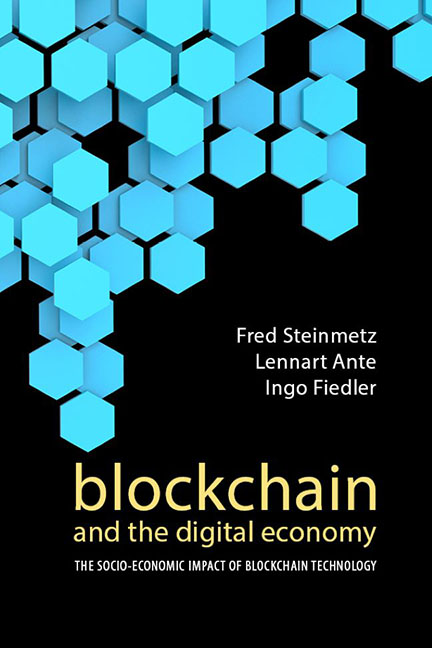4 - Applications of blockchain technology in different domains
Published online by Cambridge University Press: 20 December 2023
Summary
As indicated in the previous chapters, there are broad application potentials for blockchain technology. It is a comparably young technology, which is developing and constantly progressing, and which could be deployed in almost every sector. It is quite possible that some of the most exciting and innovative applications of the technology have not yet been considered. Smart contracts in combination with micro-transactions will enable futuristic smart applications. For example, hotel rooms or parking spaces that are autonomously billed and paid for in real time, or media articles that are billed per single-word read. However, one must always be aware that while the blockchain itself is a theoretically error-free system, such applications always require data transmissions from external sources (known as oracles). There is a danger that information could be manipulated here. Depending on the case, the blockchain solution is only as good as the level of trust in the oracle that provides data. In turn, this creates new business potential for insurance companies to insure such risks.
In the hunt for new ideas and applications, there are some simple questions that should always be asked initially: is there an existing intermediary that could be eliminated by using blockchain or cryptocurrency? Are certain applications required to document or collateralize processes because participants in a market or transaction are reluctant to do so?
Currency and remittances are obvious applications that fulfil these criteria. It is no surprise that the inventor of the blockchain introduced a cryptocurrency as the first application, when the effects of the Great Financial Crisis were taking hold. A classic bank account is just centrally deposited with a bank and when money is transferred, various intermediaries (the initiator's bank and the target bank) are always involved. With cryptocurrency the degree of private autonomy increases, but this also leads to an increased risk. Banks have deposit protection and users are insured against theft. This is not the case with cryptocurrency. So there is a trade-off between independence and security, which comes with fees and external monitoring. For cross-border transfers, the use of blockchain-based value transfers is immediately clear.
- Type
- Chapter
- Information
- Blockchain and the Digital EconomyThe Socio-Economic Impact of Blockchain Technology, pp. 115 - 172Publisher: Agenda PublishingPrint publication year: 2020



